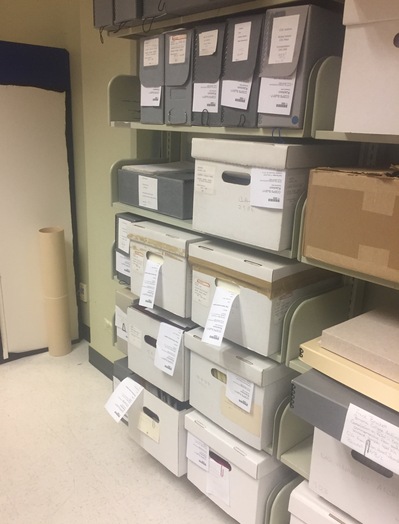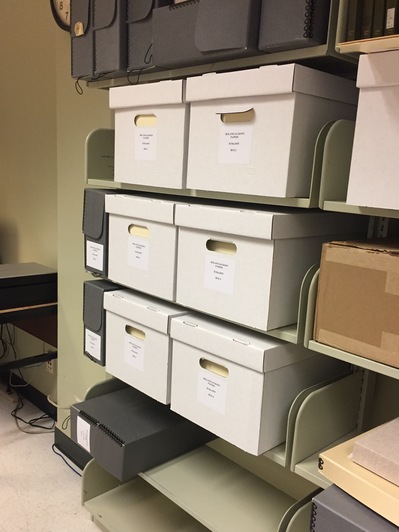Hello everyone, my name is Kiera and I am new to the CLIR
Water Project. Moving forward, I will be updating you about my experiences with
this collection, but first I can tell you a little bit about me. I am a
graduate student at Claremont Graduate University in the Cultural Studies
program. Cultural Studies draws from a wide array of disciplines–from history
to sociology to literary criticism. Outside of school, I work at two different
museums in the area, the American Museum of Ceramic Art in Pomona and the
Bowers Museum in Santa Ana. I have come to Special Collections and the CLIR
Water Project by way of my interests in archival work, an interest I developed
while working at the Bowers Museum.
I’ve been here only a few days and already I have discovered
some incredibly interesting records in the collection. I am excited to share
some of my revelations about this archive. First, however, I thought I’d write
about the preconceptions I had as I approached this project.
If you live in California, particularly if you live in
Southern California, there is no doubt that water has been an important issue
in recent years. As a native Californian, I certainly have my own ideas on
water use in our state. As one of the most important resources for human life;
it is no coincidence that most major cities have historically been built around
bodies of water. This would make the settling of Southern California, most of
which is a desert, seem improbable. And yet here we are, thirsty and ready to
grow food, so water better keep flowing.
How did we get here? Many historians, environmental scientists,
engineers, politicians, and even members of the general public would like to
know and are working towards an answer. As I am being introduced to the wide
variety of records that we are working to digitize and preserve, I am realizing
that the CLIR project has an opportunity to contribute to the answer.
This is an awesome revelation to have during my first few
days working on the project, and I cannot wait to see what I dig up that might
be useful to future researchers and interested parties. That is one wonderful
thing I have learned doing archival work–the answers to life’s mysteries could
be a turn of a page away.
Normal
0
false
false
false
EN-US
X-NONE
X-NONE
/* Style Definitions */
table.MsoNormalTable
{mso-style-name:”Table Normal”;
mso-tstyle-rowband-size:0;
mso-tstyle-colband-size:0;
mso-style-noshow:yes;
mso-style-priority:99;
mso-style-parent:””;
mso-padding-alt:0in 5.4pt 0in 5.4pt;
mso-para-margin-top:0in;
mso-para-margin-right:0in;
mso-para-margin-bottom:10.0pt;
mso-para-margin-left:0in;
line-height:115%;
mso-pagination:widow-orphan;
font-size:11.0pt;
font-family:”Calibri”,”sans-serif”;
mso-ascii-font-family:Calibri;
mso-ascii-theme-font:minor-latin;
mso-hansi-font-family:Calibri;
mso-hansi-theme-font:minor-latin;}

